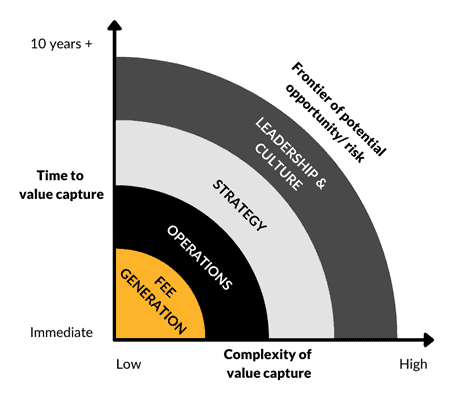The first Covid-19 lockdown closed dental practices for nine weeks, with access only available for extreme dental emergencies. Gradually, regulatory guidance was released, practice owners began deciphering it, and the battle for PPE began.
While important for continued operations, regulations dropped the capacity of practices by up to 80%, and the range of treatments available was restricted. To counter this, we advised our clients to open for seven days a week, 8am-8pm, significantly mitigating the capacity issue.
After a month of reopening, we’d noticed that a trend emerged – one that could be defined as a split between private and NHS dentistry, with an additional divide in private practice.
NHS practices
As a result of the pandemic, NHS practices were told that they’d only have to service 20% of their UDAs (Unit of Dental Activity) to receive 100% of their contract value. This meant that for these practices, there was no real incentive to innovate; owners could sit back and generate profits with an easier working environment and fewer business headaches. This is beginning to bubble up in the press, however, with fears that millions of children could face a lifetime of bad teeth due to NHS check-ups dropping by 50%.
Although this was lucrative in the short term, it could ultimately be the death of NHS dentistry. While the world moved on, few NHS practices learned how to operate in the new environment. With margins historically slim and no innovation taking place, many practices cannot exist in the current climate. This is evidenced by the fact that when demands increased, requiring them to service 40%, then 60% and now 65%, of their UDAs, these practices found it impossible to perform, meaning that they’re facing real concerns of revenue claw-back from the NHS.
Private practices
Private dentistry can be split into two distinct categories: lifestyle practices and scalable growth businesses.
Lifestyle practices (LPs) are typically smaller, principal led (or even a sole trader), and generate revenue under £800,000, with an EBITDA of <5%. They don’t run scalable operations and don’t commit to actively marketing themselves. For LPs, operating on slim margins, the only expandable service is the principal working more hours – something that’s not possible for any real length of time. During Covid-19, when faced with decreased capacity and increased costs, the only options these practices had were reducing costs (typically in “non-essential” investment marketing) and taking up furlough. The problem here is that, as with NHS practices, this process of mothballing the business compounds its issues and could doom it to failure. On the other hand, scalable growth businesses (SGBs) are generally larger and associate-led, with revenue over £1 million and an EBITDA of >10%. As the name suggests, these practices run scalable operations and invest in high-performance marketing.
For SGBs, there was a desire to get back to work quickly, and to negotiate how to perform in the new environment, beginning a period of R&D. Quickly it became clear that the pent-up demand for dentistry was an opportunity and revenues returned. It didn’t stop there, however. By the sixth month, some practices were hitting 150-200% of revenue with one example of a client’s practice’s monthly revenue doubling from £200,000 to £400,000.
The reason behind this is that while the NHS wasn’t providing dentistry in any meaningful way, and LPs were struggling to see patients, the demand naturally had to go to the SGB, which reaped all the benefits.
Demand is out there
This goes to show that for practices that are willing to flex and innovate, there are patients to be found. Indeed, in addition to reduced NHS and LP capacity, there are other factors influencing demand.
As significant numbers of people began using Zoom and other online meeting platforms, the ‘Zoom Boom’ phenomena occurred. Hours of staring at our own faces have made us more aware of “weak spots”, with many people seeking cosmetic solutions as a result. Save Face, which represents cosmetic practitioners, has experienced a surge in interest, with inquiries for neck and face procedures rising by 57%. This has also been the case in dentistry, particularly in short-term orthodontics, as people seek the “Instagram Smile”.
With travel off the menu and eating out scaled back, dentistry has also benefited from a shortage of things to spend disposable money on. This has even been observed among the furloughed workforce; with 80% of income and increased time on their hands, a restricted lifestyle still gave capacity for expensive dentistry.
The solution
To see why SGBs are succeeding, and how this success can be replicated, we can look at the abstraction model. This offers an overview of different activities and how they work over time. Each is important in its own way, and therefore good businesses are the ones that tend to all of the levels.

Let’s break down the model and consider how it works. The vertical axis is time to cash return. This is the time that it takes for you to get paid for your activities (the bottom being immediately, and the top being in 10+ years). The horizontal axis shows how complicated it is for you to capture the value. This runs from low (easy) to high (complex).
In the bottom left corner we have fee generation. In a dental practice, this is the dentistry that is being delivered. For this, payment is immediate and the complexity of the mechanism is simple. A patient comes to see the dentist, they receive a filling, and they pay immediately at the front desk. This type of activity is desirable because the treatment values are high, it’s predictable, and it’s very reliable. Why wouldn’t a dentist spend all of their time doing this? The reason is the line that separates fee generation from operations, called the Frontier of Potential: your exposure to opportunity and risk. Here, it’s fairly small.
The next layer is operations. Your first steps are to begin pulling order from chaos by having clear reporting systems that allow you to make proactive decisions, which change future outcomes. These manifest themselves at the end of the year in profits. The time to cash return is 12 months, and the complexity here is significantly higher because you have to make assumptions and carry out reporting. What you can see is that the frontier of potential has increased, as too have opportunity and risk.
The next layer is strategy. Generally, the time span for you to get paid for strategic work is about three to five years, and this is usually in increased asset value. The complexity is higher, and you’re not just looking inward at the business; you’re also facing outwards. You’re looking at the wider marketplace, technology, zeitgeist, politics…the list is endless. Here, you have to make greater assumptions and bring those into order to create value for the business, but again, your frontier of potential increases. This isn’t just about there being more opportunity; there’s also more risk. Risk that you might waste time, and also a far greater risk that you may get things wrong. But ultimately, if you’re disciplined in your approach, the rewards are there.
The final layer is leadership and culture. This is always the hardest area to tackle, as it’s abstract, personal, and unpredictable: it’s impossible to say in advance how it will benefit your business. Hindsight is 20/20 at showing the impact of leadership and culture in an organisation, and when it’s good, it’s at the core of success. This represents the greatest exposure to opportunity and risk, and it’s extremely complex. However, anyone who has experienced true leadership and culture will say that it’s generally the vital thing in any organisation, building success for the future.
If you’re facing the world as it now stands and struggling to know what to do next, try taking a hard look at what you’re attending to on this model. Chances are, you’re skipping activity in important areas, or perhaps even confining yourself to the day-to-day fee generation.
The important thing to know is that if you’re not thriving, it’s not too late. You can still get into a successful position now, but it won’t be by doing the same old things. You’ll need to embrace change, invest more and readdress what you’re doing with your time.
Working through this journey allows business owners to see that business transformation is about trading the bird in the hand for the chance of twenty in the bush. There are no guarantees, except one: you won’t get the twenty without sacrificing the one in the hand.
If you’d like help repositioning your business for the future, get in touch.








